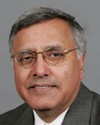Mr. Chairman, honourable members of Parliament, good afternoon.
I am here this afternoon to provide you with a short update on Canadian Forces operations in Afghanistan over the period November 21 to December 4, 2006. As always, my presentation will focus on CF activities. I'm certainly prepared to provide clarification on my presentation at its completion.
Over the past several weeks, and certainly over the last two weeks, abnormally high rains and cold weather have had some impact on Taliban operations. In Kandahar's Zhari district, the Taliban have continued to harass Canadian troops with indirect fire from mortars and rockets. They've launched several suicide bomber attacks, as you've no doubt seen in the press. In this area, the Taliban's principal aim seems to be to prevent any meaningful reconstruction.
South of this, in the Panjwai district, the Taliban is actively defending areas that it controls against ISAF patrols, and it has stepped up its efforts to isolate ISAF troops by placing numerous IEDs, or improvised explosive devices, along commonly used routes. This IED campaign is also hitting local workers who are helping in reconstruction. Several of the gravel trucks we're using on Route Summit have been struck by IEDs as well.
Toward the end of November, the Taliban resumed their suicide bombing campaign. Their main targets continue to be members of the ISAF, the International Security Assistance Force, and Afghan security forces. However, the Taliban are becoming more tolerant of civilian casualties resulting from these bombings. Furthermore, the Taliban are continuing their attacks on Afghan government officials. Last week, an improvised explosive device was detonated. The target of the attack was the police chief of Arghandab. Since September, the Taliban have launched attacks on three political figures in Kandahar.
This next slide specifically shows the insurgent-related attacks against Joint Task Force Afghanistan over the past two weeks. As you know, last week was extremely difficult for Canadian Forces personnel operating in Afghanistan, with the deaths of two soldiers as a direct result of a vehicle-borne suicide using an IED. Early on November 27, that IED struck a Canadian Bison armoured vehicle just east of Kandahar city. The strike resulted in two Canadian soldiers being killed in action, with some damage to the vehicle. The Bison was en route to the Pashmul area of operations, where most of the battle group is currently located.
In a separate earlier incident on November 21, two Canadian soldiers were injured following a mine strike two kilometres south of Zhari district centre. One soldier unfortunately lost his foot, and the other suffered eye and head injuries. They are both being taken care of as we speak by the Canadian Forces health support services. The member who lost his foot has returned here to Canada, and the other soldier returned to duty after a short stay in the Landstuhl medical centre in Germany.
Despite this difficult news, the soldiers of Joint Task Force Afghanistan continued to press ahead with their efforts to help the people of Afghanistan and to support and defend the elected government. We can all be proud of their dedicated work under very difficult conditions and their enthusiasm to do their best. It is their patient but determined approach that I think, and we all believe, is making a difference in Afghanistan.
Through my next slide I wanted to give you a sense of the recent flooding. This is a photo of the Helmand River valley, which is near the province of Kandahar. It offers an apt description of most of the southern regions and gives you a sense of the flooding that has occurred.
As I indicated in my last update to you, the dramatic change in the weather resulted in heavy and prolonged rains in many areas of Afghanistan, in particular in the Canadian area of operations. Kandahar province normally gets one inch of rain in November. This year it received a significantly higher amount, which led to flooding and damaged roads and infrastructure throughout the province. Temperatures averaged eight degrees lower than normal, hindering the drying out process.
As you will recall from my last briefing, this has caused us difficulties in the Route Summit construction. As you can see, it would be virtually impossible to be working on that road in these conditions. It has hampered our mobility and challenged us logistically in terms of resupply.
There was no improvement in the weather last week, and construction and repair work on Route Summit has only just resumed. While it is generally easier to get around now, some areas are still not easily accessible because of water levels.
As part of a project to contain water that may accumulate in future along Route Summit, the 23rd Field Engineer Squadron has dug irrigation ditches and installed culverts to facilitate mobility along the route. On a positive note, in so far as the rural economy is concerned, the rains are a boon to a country experiencing a seven-year-long drought. One rainy season will help to replenish reservoirs, thereby improving rural prosperity, particularly if groundwater levels rise and wells become operational once again.
There is a positive side to the rain that has come, and it will make a big difference in the reservoirs.
As I always try to depict going from big to small, this is the current ISAF situation. Commander ISAF's priority over the past two weeks has been Afghan-led, ISAF-supported operations focused on increasing security on main arteries, such as Highway 1 and Highway 4, for all the convoys that move up and down those roads; assistance to non-governmental organizations and international organizations; establishing and expanding the Afghanistan development zones; and improving border security.
Regional Command North has continued to focus on relief operations in the flooded areas of Badghis province, which I have highlighted in green. A broad array of humanitarian supplies, including food, water, blankets, and medical supplies, has been deployed to the PRT in that particular area. The Norwegian PRT in that area was extremely hard hit by some of the flooding.
In Regional Command Central, surrounding Kabul, the focus is on interdiction of the movement of insurgents into Kabul in the coming months. We want to maintain that as a very secure area.
In Regional Command East, the focus continues to be on reconstruction and development and successfully extending Government of Afghanistan influence at the district level.
In Regional Command West, the focus is on maintaining freedom of movement on the main arteries.
Finally, in Regional Command South, the military focus has been on maintaining security of main highways and minimizing Taliban movement and their ability to hide stores and arms in sanctuary areas.
Within Regional Command South, efforts continue to improve the security and level of confidence in Kandahar city. Kandahar city remains a bustling Afghan metropolis. There are many folks there, some 400,000 people. The streets are bustling with commerce, and constant traffic jams point to the expanding nature of the city. For those of you who travel, you'll see that. It's not all doom and gloom there. It is a rather interesting town that has a lot going on.
In Task Force Uruzgan, with the Dutch-Australian team, framework operations, base construction, and security operations continue. The Taliban activity remained rather low in this province due to the unseasonably wet weather.
In Task Force Helmand, where the British are, operations continue throughout the province to prevent insurgent infiltration. There has been no significant change in the reporting period since the last time I was here.
In Task Force Zabul, the U.S.- and Romanian-led area, framework patrols and convoy escorts continue. As I mentioned to you last time, Qalat has formally been declared an Afghan development zone.
There has been no significant change to the 1 RCR Battle Group force disposition over the last two weeks. The 1 RCR Battle Group's efforts continue to be the provision of security, with their Afghan national security partners, throughout the Zhari–Panjwai area. In particular, operations in the area of Route Summit continue to dominate the immediate efforts of the entire battle group. The Canadian tank squadron has been used to beef up security in this area so that Route Summit construction can accelerate, hopefully enable more Afghans to return home, and allow commerce to begin.
Three new DND-funded projects have been initiated, and I will highlight those shortly. Almost one-half of the infantry company dispatched from Valcartier has arrived and will be a very welcome addition to the effort of enhancing security to allow more reconstruction.
The civil-military cooperation element of the PRT is coordinating and has coordinated a number of small cash-for-work projects in the vicinity of our forward operating bases, and I'll describe those in more detail as we progress.
In response to some initial concerns over the quality of the Afghanistan National Auxiliary Police recruits, the PRT has been cooperating with the provincial chief of police to conduct recruitment through local shuras. As part of this process at district shuras, a meeting of the elders, the assembled elders are asked to put forward good local candidates for the Afghanistan National Auxiliary Police, the argument being that there will be no security unless the community participates in finding a solution. This is the opportunity to ensure that the people who are charged with policing their villages are people they can trust: don't nominate somebody you don't want to have as an auxiliary policeman in your local town. That, I think, will pay us dividends to ensure that we're screening to the best of our ability the folks who are coming into the auxiliary police.
The observer-mentor liaison teams continue their work with the Afghan National Army, embedded with the 300 or 400 Afghan soldiers we work with on a day-to-day basis in Kandahar province, which is a very good trend. They have established a good rapport with many of the local population because they are embedded with the ANA and are out in the communities. This is good confidence-building for the local population when they see not only the Afghan National Army there, but our soldiers working with them and supporting them.
You can see on the next slide—and I have submitted this to the committee—the projects that DND has been working on, 39 of them. Additional new DND-funded projects are noted on this slide and are examples of the PRT helping and supporting the governor and local Afghans.
At the tactical level, quick impact projects were launched into Zhari and Panjwai districts, including winterizing Afghan National Police checkpoints, clearing waterways, refurbishing the wiring in local mosques, repairing plumbing, bathrooms, and septic systems, and winterizing the Zhari district centre. This gives you a sense of the smaller projects we do to make a quick impact, and they are part of the cash-for-work programs to help in the local communities, right here and now. They don't take a long time to plan. If we need this fixed, the workforce shows up and some quick efforts can be made in that regard.
The longer-term, more expansive projects being worked on by CIDA, Foreign Affairs, and the international community are also encouraging. The committee might benefit from having those departments explain them, in order to better appreciate the full Canadian effort. Clearly, I talk just about the DND piece here, but there are many bigger issues under way. Certainly, again, when the committee visits Afghanistan, you'll see a sampling and get a good sense for how many projects are under way.
The next slide, which I keep bringing back, just gives you a sense of what's been accomplished over the last two weeks. There's NFTR—nothing further to report, in good old military jargon—but I did want to just spend a couple of minutes describing to you a village medical outreach so that you get a sense of that activity, which is great stuff.
The Kandahar-based provincial reconstruction team conducted an Afghan village medical outreach patrol on Sunday, November 19, at Forward Operating Base Martello, which is in the Sha Wali Kot district of Kandahar province, just to the north of Kandahar city.
Three Afghan doctors and one Afghan dentist treated 137 patients. The provincial reconstruction team, or PRT, supplied medical equipment and escorted doctors during a two-and-a half day patrol in the region. In addition to providing medical care, the PRT also distributed firewood, generators and gas-powered water pumps, as well as dolls to the children. Plans are to dispatch additional medical patrols to villages in the Sha Wali Kot district in the near future.
On the next slide, the strategic advisory team, our 14-person CF team, assisted the Government of Afghanistan in the development of a cohesive humanitarian assistance plan in the wake of the recent flooding. We've assisted the federal authorities to try to help out at the provincial level. This included facilitating government officials' movements to visit flood-damaged areas across the country for damage assessments.
A second example of what the strategic assessment team achieved during this period was supporting meetings that were held with eight provincial councillors to discuss disparity and support with respect to national, provincial, and local initiatives.
The SAT provided support to Minister Zia, the Minister for Rural Rehabilitation and Development, in preparation for his visit to Canada this past week that was sponsored by CIDA. During a speech at the national press centre in Ottawa on Friday, the minister stated--let me quote a short part of his speech:
Today in Kandahar in terms of development...we have an outreach to 495 villages.... And the same number is our achievement in the province of Helman. And of course security has slowed down our activities in the south but it's not totally suspended.
The significance of Canadian development aid has been to effect and consolidate a stability in the country.
He mentioned a number of things, but I thought that was worth flagging for your attention.
Finally, a fourth example of what the SAT has been up to is helping with the preparation of provincial development plans. Really, we're looking to coordinate efforts between provinces, ISAF, and the UN mission in Afghanistan. If this is accepted by all parties, this document will form the basis for an Afghan national development strategy working group. The efforts will lead to a development forum scheduled for February 2007. We don't try to do these ourselves obviously; the team is trying to support the government officials as they work through it. But it gives you a sense of what that team is accomplishing.
Based on a question that was posed last time I was here, I thought I'd dwell on food packages and their distribution. The Kandahar provincial reconstruction team is helping to coordinate and provide security in the distribution of food packages provided by both the world food program and to a lesser extent the U.S. Department of Defense. In all cases, the food distributed is culturally sensitive.
The world food program distribution has been in the form of family packages. The packages take into account cultural sensitivities in the region. They consist of a variety of rice, oils, peas, and beans. Each package weighs approximately 95 kilograms, so it takes a couple of them to lift that. These packages are designed to provide enough food to feed a family of six for a period of one month.
To a lesser extent, Canadian Forces personnel have also distributed humanitarian daily ration packages as provided by the U.S. Department of Defense. These packages come as pouched meals, and they are also culturally sensitive for the Afghan population. These daily rations contain no animal products or animal byproducts, except the minimal amounts of dairy products that are permitted. Alcohol and alcohol-based ingredients are also banned.
The meal bag contains graphics demonstrating how to open each bag and how the contents should be eaten. Each meal is designed to provide a full day's supply of food and consists of not less than 2,000 calories. Again, to reassure the committee that there is some sensitivity applied, it's a similar type of meal, consisting of vegetables, beans, rice, biscuits, pastries, and condiment packages. These aren't Canadian Forces packages; we're just helping to provide the security and delivery thereof.
Mr. Chairman, that concludes my update.




